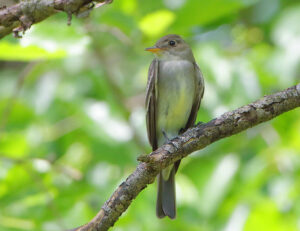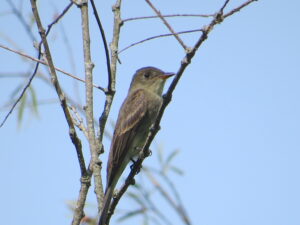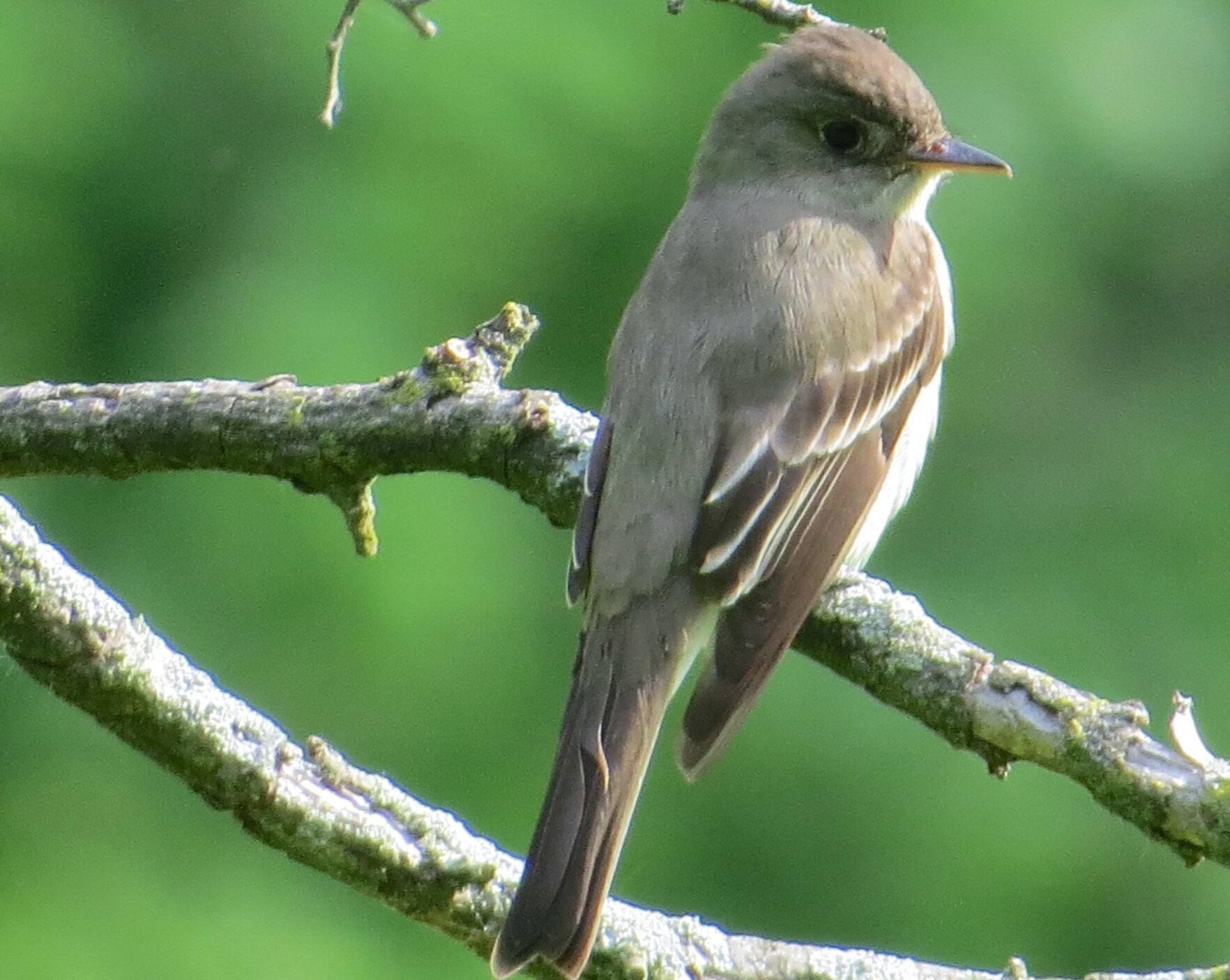Eastern Wood-Pewee, Contopus virens
Bill Rowe
On any summer hike through the woods, even in the midday heat, you will surely hear the Eastern Wood-Pewee plaintively singing its name. One of our most numerous forest birds, the pewee wears the modest plumage typical of some flycatchers, and its habits are quietly predictable—a period of perching motionless on a branch to scan for insects, a quick launch into the air to make a catch, and then a return to (frequently) the same spot as before. It is a widespread nesting bird throughout the entire eastern United States and southern Canada, but as a neotropical migrant it has a long flight to get here in the spring, all the way from northern South America. Like most such migrants, it doesn’t arrive until late April, and it stays with us only through September or early October before heading south through Mexico and Central America, but usually without stopping there. Up here in North America, our geologic history has placed the vast Great Plains as a barrier between the deciduous forests of the east (the home of this pewee) and the conifer forests of the west; and as with many birds and other life forms, this has left a western population to evolve separately from the eastern one. This process has produced the Western Wood-Pewee, typical of Rocky Mountain pine woods and so similar in appearance to the eastern birds that it can’t be safely identified by sight—yet without doubt it is a different species. You won’t mistake it once you hear its very different burry voice.
IDENTIFICATION: Your first clue is often the voice, a clear, slurred pee-a-wee or simply per-wee. What you’ll see is an olive-gray bird the size of a largish sparrow, perched upright, with two distinct wingbars; only a slight partial eyering behind the eye; some gray smudging on either side of the breast; and a bill that is dark above and orangey below. You’ll have to pay attention to be sure it’s not the same-size Eastern Phoebe (more contrasty dark head and white throat, an all-dark bill, and only weak wingbars) or a smaller Empidonax flycatcher like the Acadian (full eyering, much wing and tail flicking). One helpful characteristic of pewees is the very long pointed wings, extending almost halfway down the tail. See photos above and below, and read your field guide too!
ST. LOUIS STATUS: A common bird of the summer woods; also in parks and occasionally suburban yards that seem “woodsy” enough. Warm weather only; see above for timetable.
Learn more and listen to the songs and calls of Eastern Wood-Pewees here.


View from front: note torpedo shape, gray vest, partial eyering behind eye, orange lower bill.
Photo Credit: Al Smith
Juvenile: note cinnamon wingbars, darker lower bill.
Photo Credit: Bill Rowe




